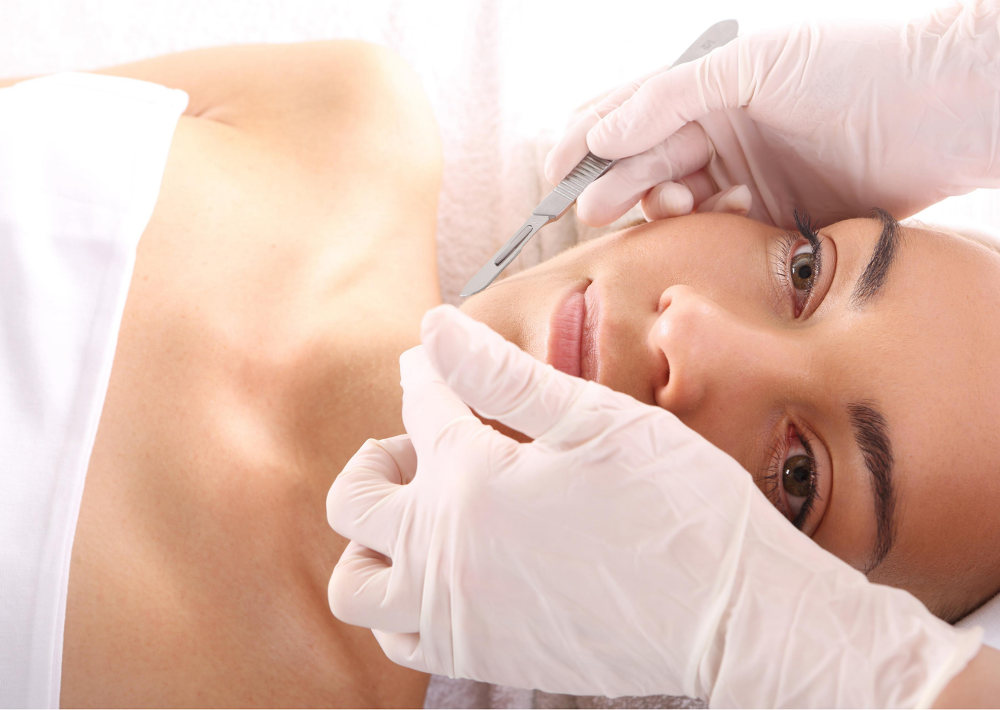Every woman has facial hair. There are two types, vellus hair and terminal hair. Vellus hair is the near-invisible peach fuzz that covers much of the face and body. Our skin also has sebaceous glands that produce naturally hydrating oils and a built-in process that constantly produces new skin cells while shedding the old. Skin cells — also called keratinocytes — are composed of a protein called keratin and are formed in the epidermis.
During its life cycle, a skin cell travels up through the epidermis to the dermis until it reaches the skin’s outermost layer (called the stratum corneum). When it reaches the outer layer, or surface layer, the skin cell dies and is eventually shed through a process called desquamation. Every hour nearly 40,000 skin cells are shed, and it takes one skin cell about a month to complete the desquamation process.
As these older, dead skin cells are shed each day, they reveal newer, more radiant-looking skin underneath. There are a few factors, however, that can cause those dead skin cells to build up on the skin’s surface instead of being shed away.
What is dermablading?
Dermablading is the process of gently scraping away dead skin cells and ‘peach fuzz’ hairs to give your skin a smoother, brighter complexion. This process removes not only the dead skin cells but also the extra fine hair that can be frustrating from the body. This process helps to lighten wrinkles and deeply exfoliate the skin, make your skin look and feel smoother and brighter (this treatment will not make your hair grow back darker or thicker).
How long does dermablading take to perform?
Generally, dermablading should only take about 5-10 minutes to perform and it can easily fit into your nighttime skin care routine when needed or before a big event.
What are the benefits of dermablading?
The process of dermablading should be done on a regular basis if you want your skin to retain a healthy, youthful glow. Dermablading has many benefits, including:
- Evening out skin tone
- Helps to lighten wrinkles
- Boosting blood circulation
- Improving skin texture
- Reducing dryness and itchiness
- Help to exfoliate the skin
- Make skin smoother and brighter.
Is dermablading Safe?
Dermablading is safe for most people, with little risk of side effects when it’s performed by a certified dermatologist. Dermablading is also safe for even pregnant or nursing women as the sterile blade will just glide over the skin and does not break it as your cosmetic medical provider uses light, feathering strokes over the skin. Even individuals with skin conditions like rosacea or sensitive skin can utilize dermablading without adverse side effects.
Possible complications of dermablading may include:
- Fever blisters. Dermablading can cause fever blisters to reappear in those who are prone to frequent herpes simplex infections. Antiviral medicines are often used to treat this symptom. You may be given them before your treatment.
- Pigmentation changes. Some people may develop a change in the pigmentation (coloration) of their skin after undergoing the procedure. Treatment for this symptom may include the use of bleaching creams, as prescribed by a doctor. A decrease in pigmentation can be permanent.
- Thickened skin. Thickening of the skin can develop. This symptom may be treated with cortisone creams or injections which help the skin return to its normal state.
- Redness. The skin may be red and swollen. It may appear scraped for several days.






